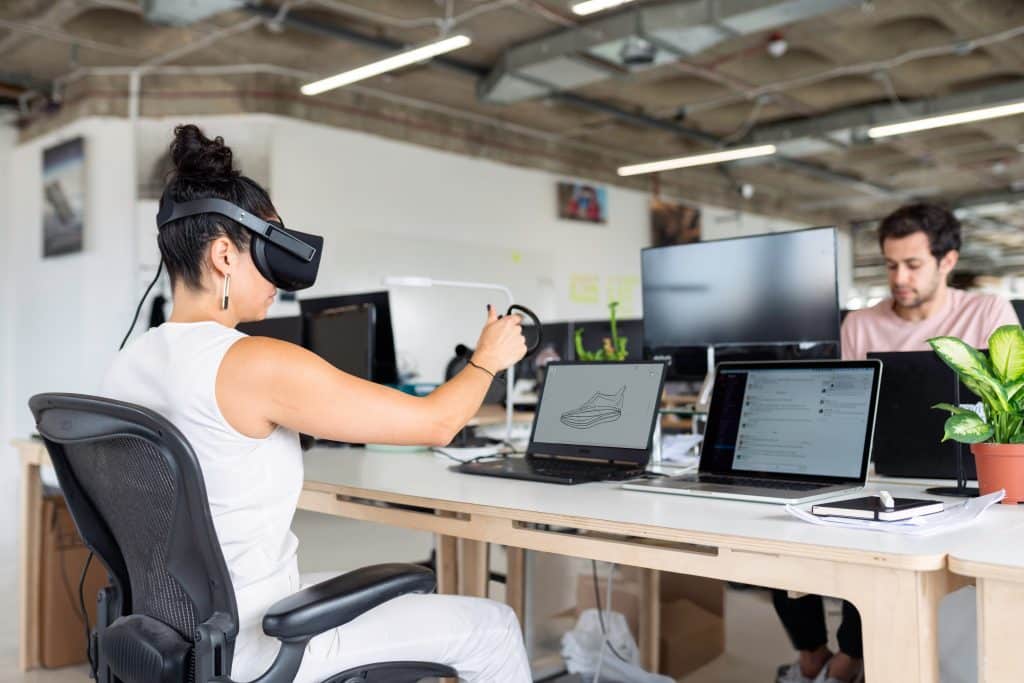The internet space is not new to changes. In fact, it has rapidly changed faces over a short period. However, it might be taking on its greatest change yet, in the form of the Metaverse.
And through these changes, web design kept up. The designs evolved as the uses and offerings of the Internet expanded. With Metaverse, the user experience will be on a whole different level.
A smart and innovative web design company knows that now is the best time to learn about Metaverse and how it will change the landscape of web design.
What Is Metaverse
First of all, let’s lay down the basics of the Metaverse. It is an interconnection of shared 3D virtual spaces to make up a virtual universe. Also referred to as the artificial reality (AR) cloud or spatial Internet, this innovation pushes the boundaries of the Internet domain we know and use today.
Brands can use the Metaverse to create immersive virtual environments where a direct connection with consumers is highly possible. This results in immersive and interactive business websites that integrate artificial intelligence (AI), augmented reality (AR), and virtual reality (VR).

With this innovation, let’s see how it directly affects the evolution of web design.
How Metaverse Affects Web Design
- Widespread Use of New-Age Technology
There will be an expected rise in incorporating AI, AR, and VR in web design. What we see today in companies, such as Ikea, is only the beginning of this integration.
Ikea’s current innovation is an AR online catalog. This technology is ideal for Ikea, a furniture distribution company, to lessen the difficulty of online furniture shopping.
With the use of the AR app, the client can use a feature where they point their gadget’s camera to where they want to place their possible purchase. The app will generate an image with the furniture to show if it fits with the existing space and interior design of the house.
As of today, this feature is available on the brand’s app only. However, it will come as no surprise if the company website will also incorporate this feature in the near future.
Along with its rise in the retail industry, augmented reality and virtual reality will continue to change the core elements of web design.
To stay relevant in the Metaverse, company websites need to take up space in the virtual space. AI elements will become more prevalent in business websites, such as interactive menus and more human-like chatbots. Similarly, 3D designs and concepts will also be a prevalent choice among web designers.
With all elements considered, web design will no longer be encapsulated in a traditional and basic design.
- AR Ads
Augmented reality is one of the core drivers of the Metaverse; it’s only fitting that web designs cater to AR-oriented ads.
In the same manner, AR ads also create an interactive space for the users. The critical part of bridging the output with the virtual experience lies in the hands of graphic and web designers.
With the impending rise of the popularity of AR ads, it’s best to create design host sites where it can easily cater to the full experience of augmented reality advertising. Meta, particularly Facebook, is planning for AR Facebook Ads.
This type of ad is targeted towards the retail sector of the app first. With an augmented reality producer partner, Meta will produce AR ads that let users interact with the product first hand. After which, the user can easily share this ad into the vast Metaverse through Facebook Stories or through regularly shared posts.
This experience will be widely different from what we have today. From multiple images that show the different angles of an item, AR-oriented ads will be more immersive. A user will access a single file that’s easy to manipulate to see all the possible angles, similar to in-person shopping.
- AR Gaming + Socialization
The future of web design also relies on its capacity to keep up with the integration of AR gaming and socialization.

The goal of AR gaming is to become more life-like in the long run. With a high-powered headset, there might be a time where users will confuse the game reality with real-life.
As such, the future of web design is geared towards AR headset optimization. It is already started by the tech giant, Meta.
Facebook’s Metaverse is stemmed from its acquisition of Oculus, a VR gaming headset company. These companies plan to expand together through Oculus Home. This is an online Metaverse for gamers where gaming and socialization are merged together in a single virtual space.
With this type of merger, one of the primary plausible ways to expand brand recognition through the Metaverse is to have VR headset-optimized websites. Once made, gamers and users alike can easily access and immerse with different brands during downtime.
Metaverse Today
This recent innovation of the internet is still at its roots. Regardless of just starting, investments made by global companies like Facebook and Microsoft accelerated its growth and importance exponentially.
Mark Zuckerberg, CEO of Meta, claims that the utilities of Metaverse will become the norm in about five to ten years time. However, the basics of such technology are already present now but in niche areas.
Roblox and Minecraft, both of which seemingly appear as children’s games, are already embodying the basics of the Metaverse. Both games already combine gaming and socialization in a single platform. Other than that, both are laced with intricate world-building systems.
Final Words
The Metaverse is yet another change in the Internet space, and it’s making the impression that it will be the most impactful.
Going into the Metaverse will change a lot of things that we are used to. The traditional ways and methods of web designing are one of the countless others that will drastically change, but for the better.
Integrating new technology such as AI, VR, and AR will produce a better user experience and, thus, user satisfaction too. The Metaverse will only change the methods of web design, but not its purpose.













Leave a Reply